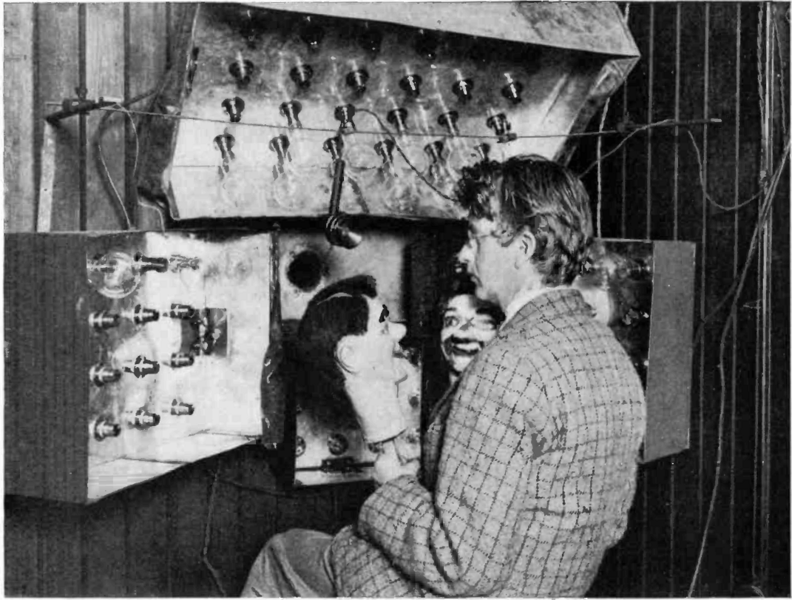Image: John Logie Baird and Stooky Bill

Description: British inventor John Logie Baird and his first publicly demonstrated television system, with which he transmitted moving pictures March 25, 1925 at the London department store Selfridges. This was one of the first demonstrations of television technology. The selenium photoelectric tubes he used had such low sensitivity that human faces could not be televised due to their low contrast. So Baird used the two articulated ventriloquist's dummies shown, "James" and "Stooky Bill" (right), whose painted faces had higher contrast, and televised them speaking and moving. The banks of bright light bulbs were required to illuminate the faces enough to produce an image. His mechanical televisor system had a large spinning disk with 30 lenses mounted in it. As each lens passed across the subject it generated a scan line of the image. At the receiver a similar spinning disk with holes recreated the image. The image thus had a resolution of 30 scan lines, just enough to recognize a face. By the next year Baird was televising real human faces. Caption: BEFORE THE FOOTLIGHTS OF THE TELEVISOR TRANSMITTER - The two ventriloquist's dolls, James and Bill - "the first television stars" - are held by Baird in front of the microphone and the mechanical eye that sees and hears everything that goes on in front of it. Alterations to image: Rotated image a few degrees to justify it.
Title: John Logie Baird and Stooky Bill
Credit: Retrieved August 15, 2014 from Orrin Dunlap, Jr., "The Televisor" in Popular Radio magazine, published by Popular Radio, Inc., New York, Vol. 10, No. 7, November 1926, p. 650 on AmericanRadioHistory.com.
Author: Orrin Dunlap, Jr.
Permission: This 1926 issue of Popular Radio magazine would have the copyright renewed in 1954. Online page scans of the Catalog of Copyright Entries, published by the US Copyright Office can be found here. [1] Search of the Renewals for Periodicals for 1953, 1954, and 1956 show no renewal entries for Popular Radio. Therefore the magazine's copyright was not renewed and it is in the public domain.
Usage Terms: Public domain
License: Public domain
Attribution Required?: No
Image usage
The following 3 pages link to this image:

